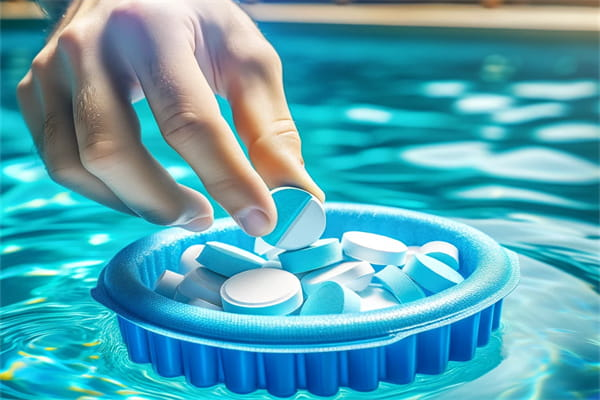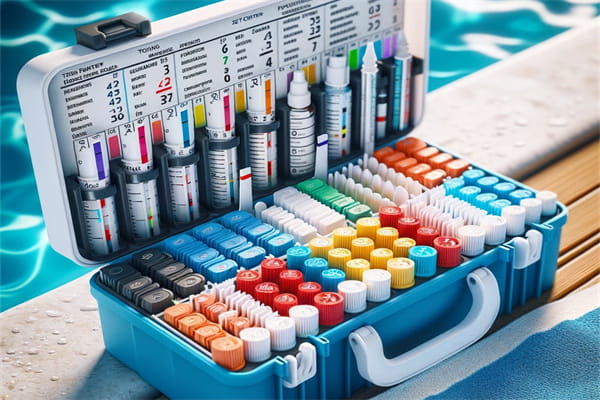Using chlorine tablets to sanitize your pool may seem straightforward, but it’s crucial to get the frequency right. Adding chlorine tablets too often or too infrequently can lead to ineffective sanitization and potential pool issues. This article will guide you on the optimal frequency for adding chlorine tablets to your pool, helping you maintain a sparkling and safe swimming environment.

Ⅰ. Typical Frequency for Adding Chlorine Tablets
So, how often should you put chlorine tablets in your pool? The general recommendation is to add chlorine tablets once a week. This weekly routine ensures that your pool maintains the proper chlorine levels needed to keep the water clean and free from harmful bacteria and algae.
However, it’s important to note that this is just a guideline. Regularly testing your pool water is essential to ensure that your chlorine levels stay within the optimal range of 1-3 ppm (parts per million). If you notice that your chlorine levels are consistently falling outside of this range, you may need to adjust the frequency of adding tablets.
Ⅱ. Factors Affecting Chlorine Tablet Frequency
Several factors can influence how often you need to add chlorine tablets to your pool. Understanding these factors can help you tailor your maintenance routine to your specific pool’s needs.
1.Pool Size
The size of your pool plays a significant role in determining the frequency of adding chlorine tablets. Larger pools have a greater volume of water, which means they can dilute chlorine more quickly. Consequently, you might need to add more tablets or do so more frequently to maintain the appropriate chlorine levels.
2.Usage Frequency
How often you and others use your pool can also impact chlorine consumption. Pools that see a lot of use, such as those frequently hosting parties or having many swimmers, tend to require more chlorine. This is because the more people use the pool, the more contaminants like sweat, sunscreen, and other organic materials are introduced into the water.
If your pool is heavily used, consider testing the water more frequently and be prepared to add chlorine tablets more often than once a week to keep the water properly sanitized.
3.Weather Conditions
Weather can significantly affect the chlorine levels in your pool. During hot weather, chlorine tends to dissipate more quickly due to the increased temperature and UV exposure from the sun. On particularly sunny and hot days, you may notice that your chlorine levels drop faster than usual.
On the other hand, rainy weather can also impact chlorine levels by diluting the pool water, thus reducing the concentration of chlorine. In both scenarios, you may need to adjust the frequency of adding chlorine tablets to compensate for these weather effects.
4.Water Quality
Maintaining balanced water chemistry is crucial for the effectiveness of chlorine tablets. If your pool’s pH, alkalinity, and calcium hardness levels are off, it can affect how well the chlorine works. Unbalanced water can lead to quicker chlorine depletion and less effective sanitization.
Regularly testing and balancing your pool’s water chemistry can help ensure that the chlorine tablets you add are working effectively and that you aren’t wasting chemicals. This can help you maintain the appropriate frequency for adding tablets without overusing them.
Ⅲ. Optimal Chlorine Levels for Your Pool
To keep your pool safe and clean, aim to maintain chlorine levels between 1-3 ppm. Regularly testing your pool water with a reliable test kit is the best way to monitor these levels. Here’s how to ensure your pool stays within the optimal chlorine range:

1.Test the Water Regularly:
At least twice a week during the swimming season, use a test kit to check your pool’s chlorine levels. Testing more frequently is advisable if your pool sees heavy use or extreme weather conditions.
2.Adjust Accordingly:
Based on your test results, adjust the chlorine levels by adding more tablets or adjusting the settings on your chlorine floater or feeder. If the chlorine levels are too high, you can let them decrease naturally or partially drain and refill the pool to dilute the chlorine.
3.Balance Other Chemicals:
Ensure that other aspects of your pool’s chemistry are in balance. pH levels should be between 7.2 and 7.6, and alkalinity should be between 80 and 120 ppm. Properly balanced water supports the effectiveness of chlorine and helps maintain optimal sanitization.
Ⅳ. Conclusion
Maintaining the right frequency for adding chlorine tablets to your pool is essential for keeping the water clean and safe for swimming. While the general recommendation is to add chlorine tablets once a week, factors such as pool size, usage, weather conditions, and water quality can influence this frequency. Regular testing and adjusting your maintenance routine based on these factors will help ensure your pool remains in top condition.

 Instant
Quote
Instant
Quote Email
Us
Email
Us